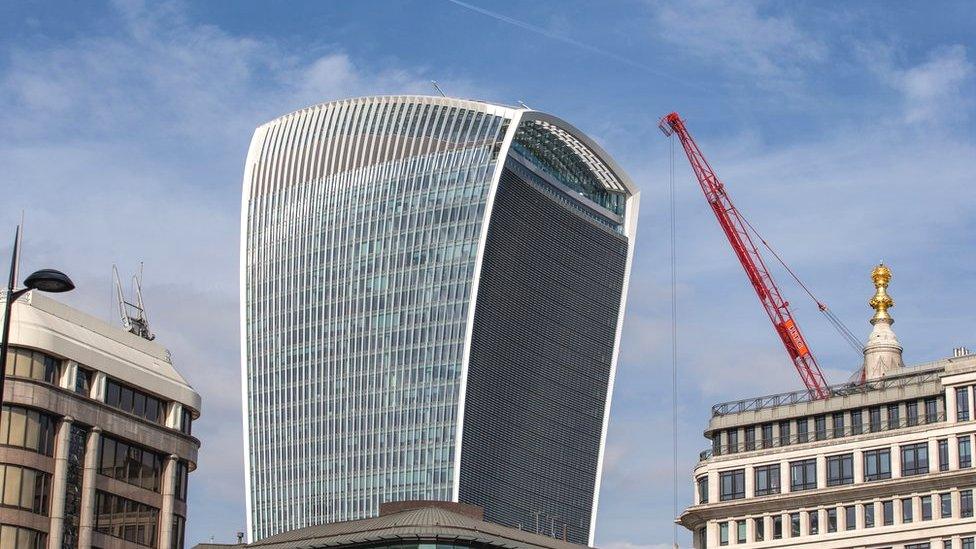Five reasons why buildings collapse
- Published
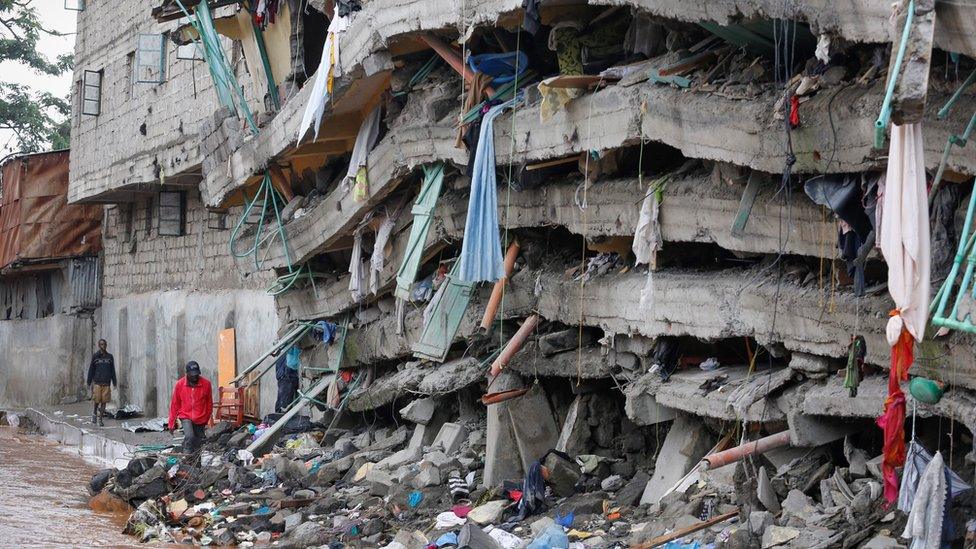
Dozens of people are still feared trapped under the rubble in Nairobi
After a building collapsed in Kenya last week, killing at least 33 people, experts look at some reasons why such incidents occur in Africa.
The six-storey residence in Kenya's capital Nairobi came down in heavy rain, with more than 80 people still missing.
While investigations are still underway into the cause of this collapse, we look at some common problems.
1. The foundations are too weak
Adequate foundations can be costly.
They can cost up to half the price of a building, observes professor of civil engineering Anthony Ede at Covenant University in Ota, Nigeria.
He says two things should be considered when you are building the foundations - the solidity of the soil and the heaviness of the building and its contents.
In the commercial capital of his country, Lagos, the swampy ground requires strong foundations. Far stronger than solid ground.
But he says developers save money that should be spent on foundations when building on the city's swampy ground and many buildings have collapsed in Lagos as a result.
Even on solid ground, foundations need to be strong enough for the load.
Inadequate foundations for a four-storey building was one of three reasons given by investigators, external for a building collapsing in northern Rwanda in 2013 and killing six people.
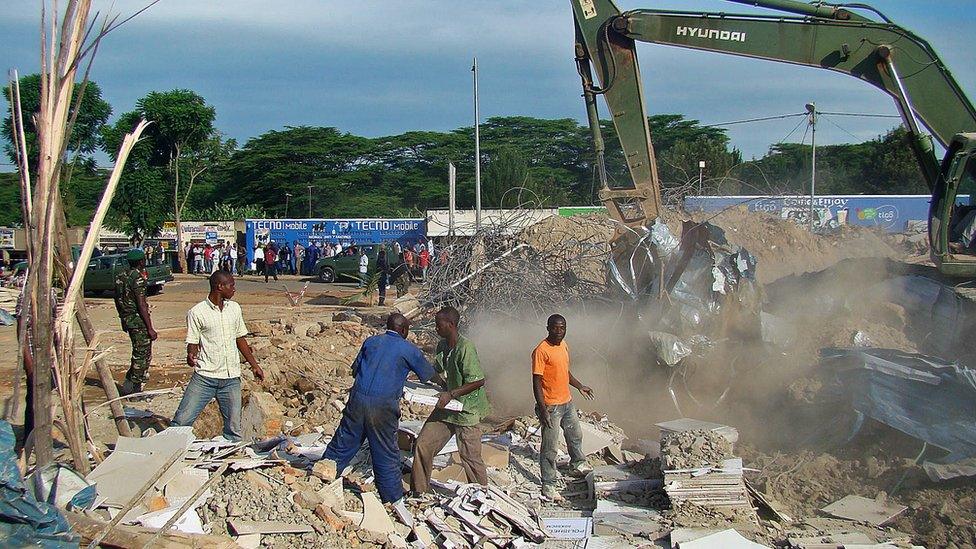
Over 30 people were rescued alive after a building collapsed in Nyagatare, north-eastern Rwanda in 2013
2. The building materials aren't strong enough
Materials that just aren't strong enough to withhold the load are used, says Hermogene Nsengimana from the African Organization for Standardisation, whose organisation met last month in Nairobi to discuss why so many African buildings collapse.
He suggests there is a market for counterfeit materials - going as far as to say that sometimes scrap metal is used instead of steel.
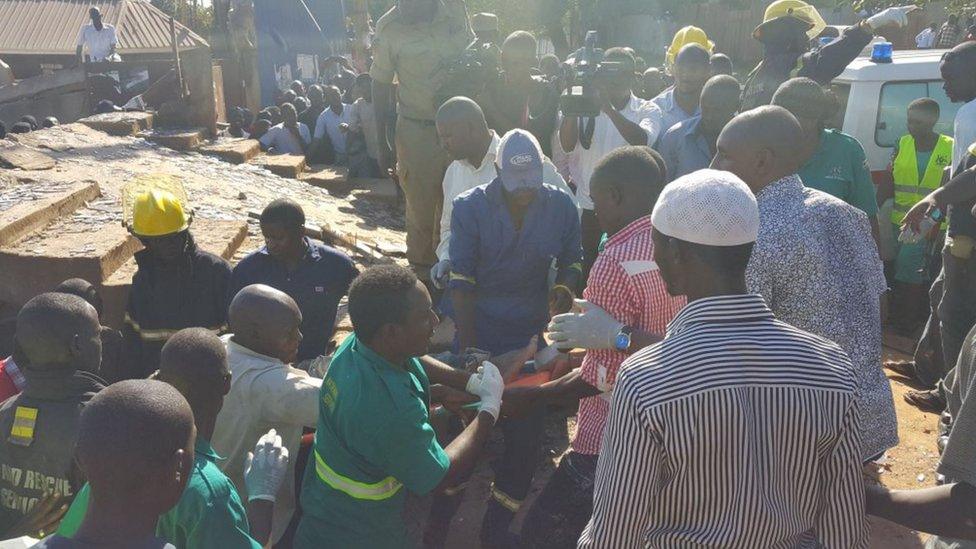
People had to be rescued from a six-storey structure in Kampala in April
When a six-storey building in Uganda's capital Kampala collapsed in April, the director of the city authority suggested it had been constructed with counterfeit materials, reports Ugo news site, external.
Mr Nsengimana says there are even cases of counterfeiters faking authentification certificates.
But he suggests contractors also knowingly use the incorrect materials to cut costs.
So they may use concrete intended to bear the load of a one-storey building in a four-storey building.
Mr Ede adds that this is something regulators are not policing.
3. Workers make mistakes
Even when workers are given the right materials to make the concrete, they mix them incorrectly, says Mr Ede.
This results in concrete which is not of the sufficient strength to hold the load.
He accuses developers of cutting costs by employing unskilled workers who are cheaper than trained builders.
This is one of the reasons put forward by civil engineers Henry Mwanaki Alinaitwe and Stephen Ekolu, external why a building in Uganda collapsed in 2004.
Their research shows that the workers misunderstood the mixing ratios of the concrete.
It suggested that people used wheelbarrows instead of measuring gauges to measure cement.
The five-storey BBJ new hotel collapsed in construction and 11 people died.
"You find bricklayers and even technicians calling themselves engineers," cautions the president of the Nigerian Institution of Structural Engineers Oreoluwa Fadayomi in Nigeria's The Punch news site., external
To those who want to save money on professionals, he advises: "One should not be penny wise and pound foolish".
4. The load is heavier than expected
Mr Ede says a building collapses when the load is beyond the strength of the building.
He gives the example of asking a baby to carry a heavy box: "The baby will not be able to withhold the strain."
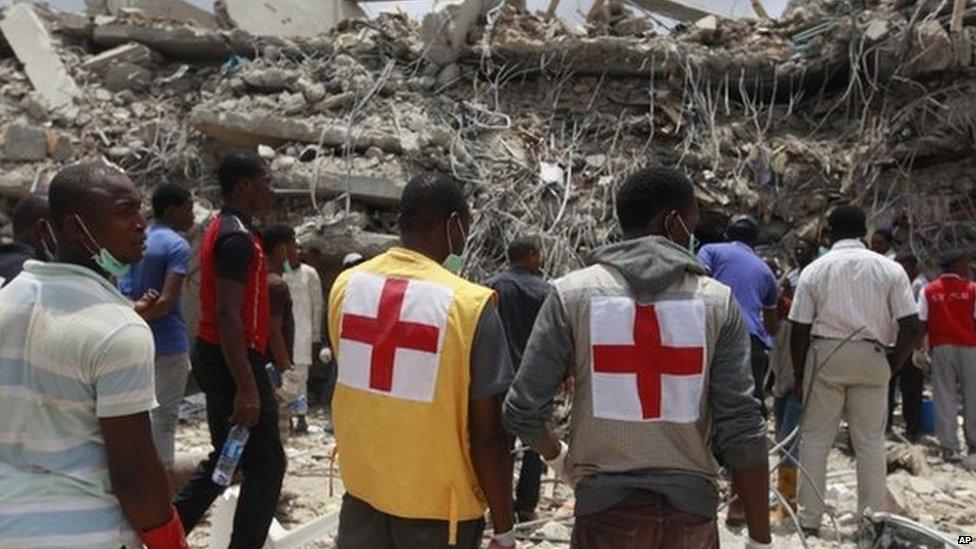
More than 100 people - mostly visitors from South Africa - died when a church guesthouse collapsed in Nigeria in 2014
Even if the foundations and the materials are strong enough for what they were originally built for, that purpose may change.
So, Mr Ede says, if a building was designed to be a home and is then turned into a library where boxes and boxes of books are piled up, the building may strain under the weight.
He says another reason why the load is often heavier than the original design is because extra storeys are added.
In March an upmarket apartment block which had more storeys than planned collapsed in Lagos, killing 34 people the Guardian reported., external
This came two years after a church accommodation for the famous preacher TB Joshua collapsed, also, authorities said, because it had more floors than it could hold. In that case more than 100 people lost their lives.
5. The strength isn't tested
At all points of construction the strength of the building should be tested, says Mr Ede.
"You have to be strict," he says, about policing building.
"The law says you must test. It's the enforcement of the law which is the problem," he says.
That's a big problem, he says, when at every stage of construction there is someone with a strong motivation to save money or take money.
There are many physical reasons a building can collapse but only one driving motivation for that to happen, says Mr Ede. That's money.
And for him this is the real reason buildings collapse - corruption.
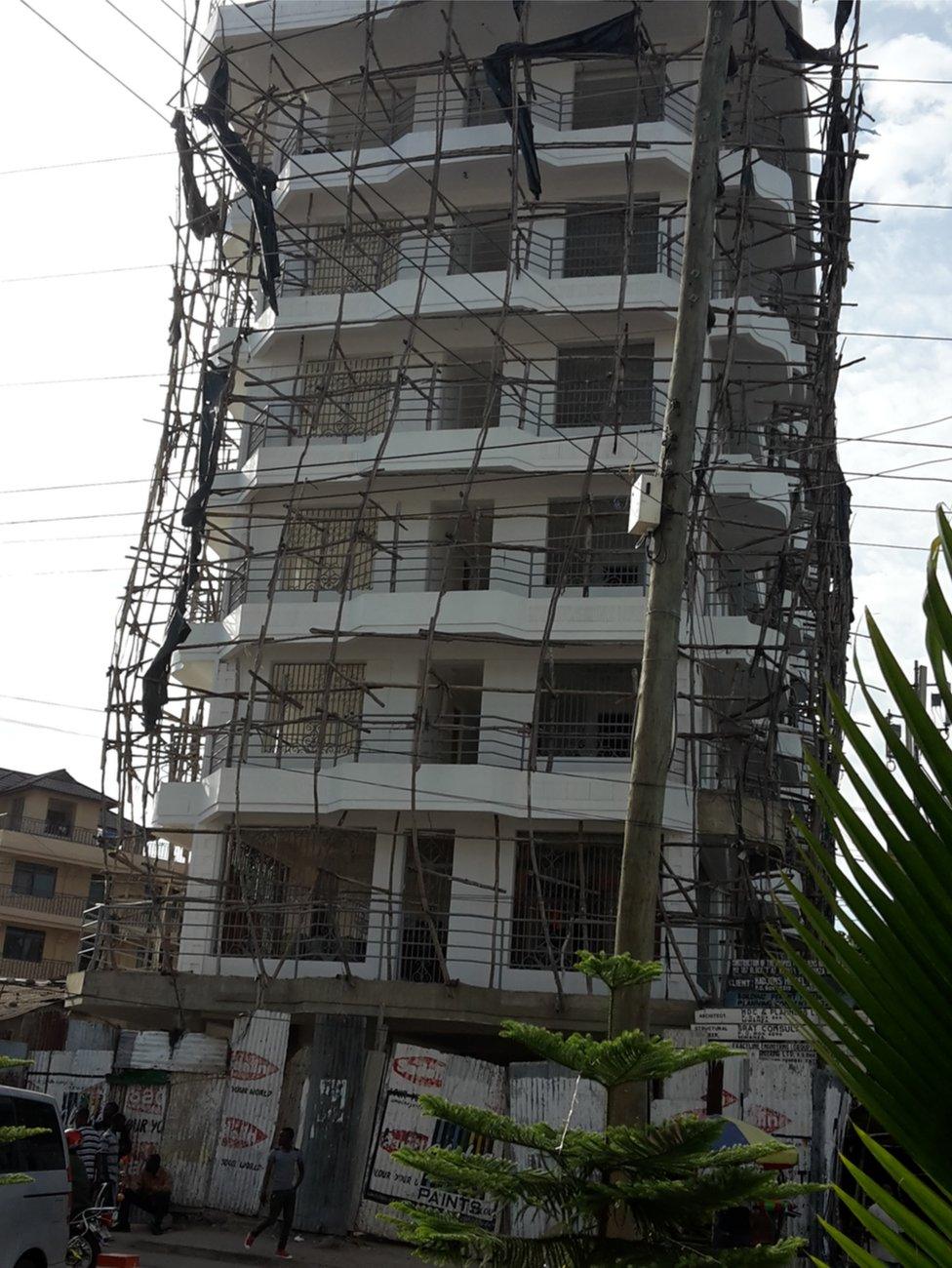
It is not unusual to see wooden scaffolding outside modern apartment blocks, like this one being built in Mwanza, Tanzania in 2016
- Published30 November 2012
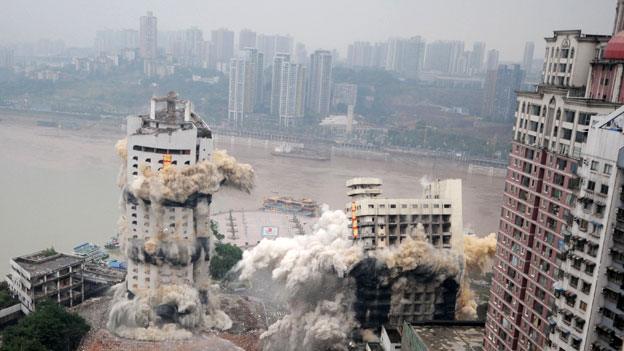
- Published9 July 2015
